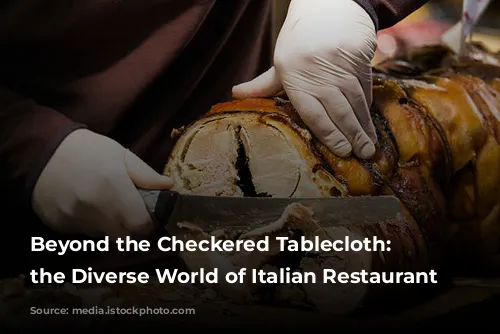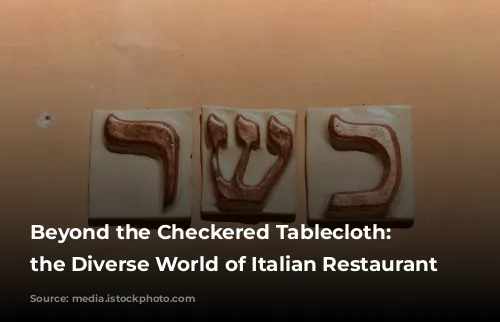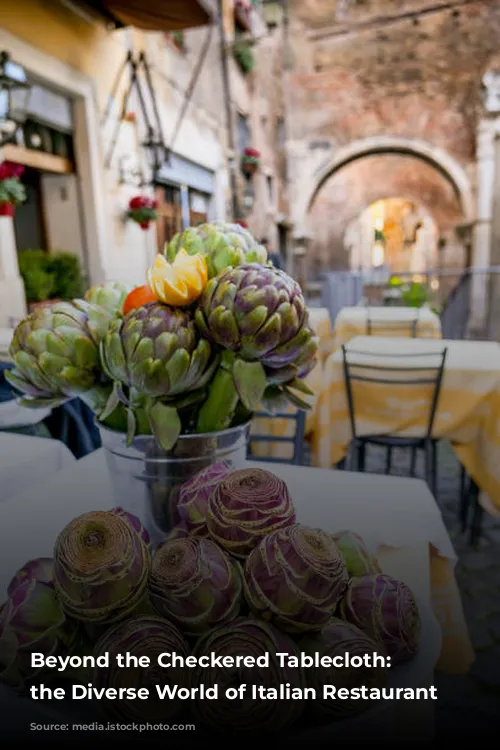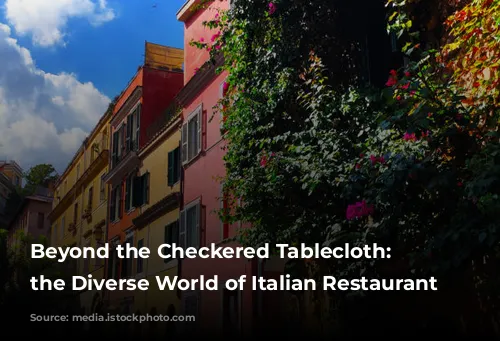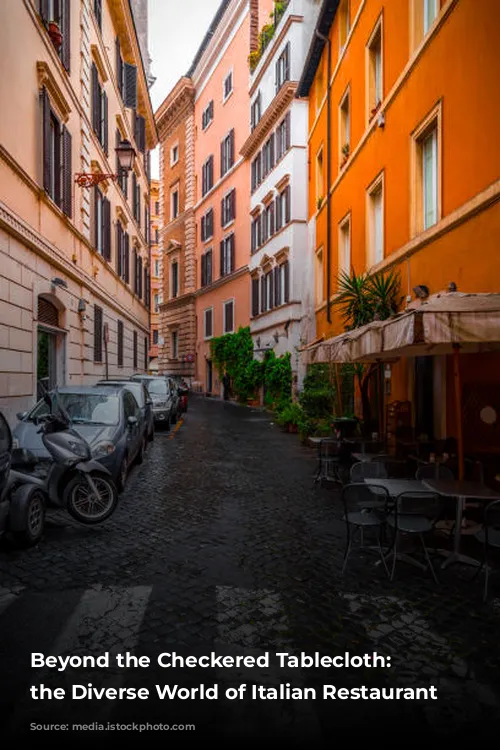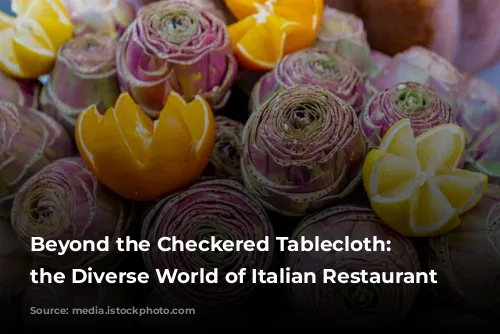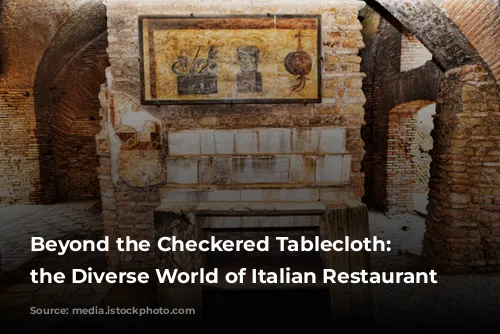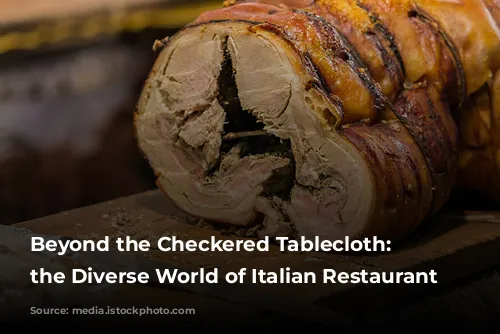It’s time to ditch those tired stereotypes! While you might picture a checkered tablecloth, images of iconic Italian landmarks, or grapevine statues when you think of Italian restaurants, the reality is much more vibrant and diverse. The interior design of an Italian restaurant is a reflection of its origins, its menu, and the kind of experience it aims to create.

A Modern Twist on Italian Charm
Modern, avant-garde, and luxurious – these are the words that come to mind when describing contemporary Italian restaurant design. With a rich design history spanning centuries, Italian aesthetics have become a staple, especially in the world of modern dining. The key? Finding the perfect balance between timeless elegance and sleek sophistication.
Imagine ivory walls adorned with intriguing brick wallpaper or captivating murals of famous Italian singers and actors. These elements evoke a sense of history while keeping the space feeling fresh, opulent, and up-to-the-minute. It’s a style that gracefully evolves with the times, maintaining its authenticity within the niche of restaurant design.
Some modern Italian restaurants embrace a more rustic aesthetic, leaning towards an industrial feel. Polished concrete floors, gleaming chrome pipes adorning the walls or ceiling, and splashes of muted earthy tones create a warm and inviting ambiance.
Lighting plays a crucial role in any restaurant’s design scheme. While ceiling lights are standard, bold and eye-catching pendant lights hanging above the tables instantly elevate the style of modern Italian restaurants. These fixtures provide both visual interest and beautiful illumination, adding a touch of refinement to even the most informal settings. Think sleek, circular, or cylindrical lamp holders with hexagonal design patterns, creating a sophisticated and slender appearance.
Restaurant furniture also offers an opportunity for expression and artistry within the confines of tasteful luxury. Plank wood tables, upholstered vintage-style chairs, and cushioned restaurant booths exude richness and sophistication. Wall dividers help create a sense of intimacy and prevent diners from feeling crowded, while lending a cozy feel to the dining room.
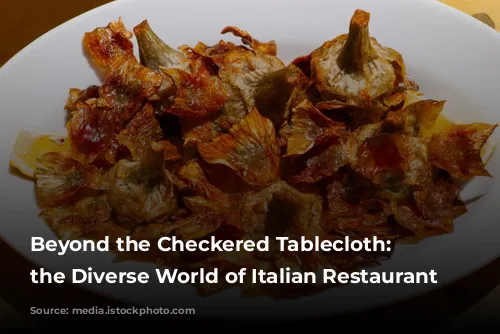
The Art of Fine Dining: Creating an Intimate Italian Experience
While the traditional Italian restaurant design might focus on checkered tablecloths and touristy imagery, there’s a whole world of possibilities beyond those clichés. Fine dining Italian restaurants, for instance, strive for a more intimate, luxurious, yet expansive feel, with a touch of decorative finesse.
Unique architecture and opulent interior designs are meticulously crafted to provide guests with exceptional views and an intimate atmosphere while they savor their meals. These establishments often feature vintage fixtures, ornamental wall decorations, beautiful wooden walls, and intricately patterned carpeting. Dark wooden floors create a striking contrast to the elegant white tablecloths draped over solid plank wood tables. Back-lit wine shelves, strategically placed amidst these decorative elements, create a sleek and sophisticated seating arrangement.
Warm, deep hues are often used as the color theme in fine dining Italian settings, evoking a sense of intimacy. Button-tufted restaurant booths, restaurant wood chairs, and wood tables adorned in white linen cloths with fancy china and glassware contribute to the elegant ambiance. In spaces where intimacy reigns supreme, diners can relax and enjoy their meal with cushioned upholstered lounge chairs or sofas. Plain walls and mirrors complement the seating layout, adding character to the entire interior.
Lighting, especially in upscale Italian restaurant design, plays a crucial role in setting the mood. Muted lighting with hanging light pendants creates a romantic atmosphere, which is often the desired ambiance for upscale Italian restaurants. Ambient lighting, warm-colored, and low-density lighting create an upscale atmosphere, especially in areas where patrons like to gather closely, such as lounges or restaurant bars. Candles placed at the center of the table, along with soft classical music playing in the background, elevate the romantic ambiance for couples enjoying a date night.

Casual Italian Charm: Where Family and Comfort Reign
Italian restaurants, in general, have a special charm that draws in guests. The interior design of a classic, family-owned Italian restaurant often incorporates décor elements that tell a family story. These décor themes enable the owners, family members, and staff to create a welcoming and homey feeling for guests. The goal is to create an atmosphere that encourages customers to spread the good word and return with family and friends.
Decorative components for a casual Italian restaurant often feature natural materials for countertops, flooring, restaurant furniture, decorations, and walls. Earthy colors and natural shades are preferred when selecting the color motif. Bright wall colors, family portraits, paintings of the Italian countryside, and an open kitchen contribute to the restaurant’s convivial atmosphere. Cool shades like green, purple, and blue create the illusion of a larger dining space.
The informal décor of an Italian restaurant celebrates the comfort and joy of life. With a focus on putting family first, the ambiance is inviting and comfortable. Because these types of Italian restaurants attract large crowds, round reversible tables that can seat up to six people are often used. Square tables are sometimes grouped together. Simple restaurant furniture items like metal ladder-back chairs, resistant to corrosion, dents, and chipping, are a great choice, and their versatile timeless design complements most décor themes.
Because many guests come to these restaurants with toddlers and babies, highchairs are always a good idea. Fixtures that evenly distribute high-density light help make the dining room feel bigger. Lighting also reinforces the restaurant’s brand. Hanging light pendants with bright lighting are often seen in casual/family-style Italian restaurants. Bright lighting facilitates foot traffic and helps increase table turnover, especially during the midday rush. Dinnertime is also a restaurant’s busiest hour, and creating a relaxing mood through lighting is crucial for encouraging guests to linger.
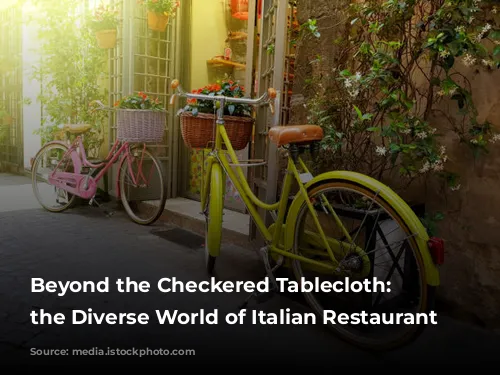
Al Fresco Dining: Embracing the Italian Outdoors
Al Fresco dining perfectly encapsulates the Italian outdoor dining experience. The term, loosely translated, means “in the cool air,” but today, it simply means dining outdoors. Many diners enjoy the view and the fun of eating with family and friends. Al Fresco dining season occurs in temperate climates as well as during the spring, summer, and autumn months. People love dining outside when the weather is beautiful. The style is casual and festive, with a party-like atmosphere.
In hot climates, Italian restaurants often have covered patios or umbrellas to keep customers cool. Patio heaters are used in chilly climates to keep customers comfortable. A restaurant patio is an extension of the restaurant, and outdoor seating attracts more diners. The outdoor waiting/dining area should be cozy and inviting. Teak wood patio tables paired with aluminum bamboo rattan chairs are an excellent choice. Not only are they made of materials that resist harsh weather elements, but the warmth of the teak wood and the woven rattan design contribute to the Italian patio décor theme, creating a European look reminiscent of an outdoor dining scene in Rome or Tuscany.
Many Italian restaurant patios are fenced off by patio partitions, allowing diners to enjoy the view while maintaining privacy. Wood decking is the crowning jewel of an Italian restaurant patio design. It is one of the most affordable ways to expand a restaurant while adding beauty and value to the patio space. This type of deck combines classic and modern elements. Cedar and redwood are the best choices of material for wood decking as they resist moisture, decay, rotting, and infestation. Flooring often uses PVC wood deck material in a variety of colors. Plants used as dividers, outdoor light decorations, pops of color, and gorgeous brick wall decor set the tone for the ambiance of an outdoor Italian restaurant space. Climbing vines, hanging baskets, and container gardens are natural decorative pieces that focus on outdoor elements. Custom installations, candles, or globe strands are great ways to brighten up everyone’s night while enjoying a delicious Italian dinner outdoors.
